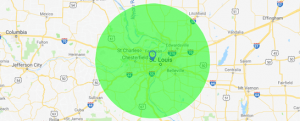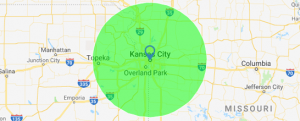Leaky refrigerator? DIY repair tips
 The refrigerator is quite possibly the most used appliance in any given American household. Considering the amount of wear and tear this critical appliance receives on a daily basis, it is a wonder that functionality issues aren’t more common. That said, there will come a time in the lifespan of any fridge where issues will arise, and problems with leaking are among the most commonly reported. If you are experiencing leakage issues with your refrigerator, you may be able to fix the issue yourself! If not, you can always call Diamond Appliance for expert refrigerator repair services in the St. Louis area.
The refrigerator is quite possibly the most used appliance in any given American household. Considering the amount of wear and tear this critical appliance receives on a daily basis, it is a wonder that functionality issues aren’t more common. That said, there will come a time in the lifespan of any fridge where issues will arise, and problems with leaking are among the most commonly reported. If you are experiencing leakage issues with your refrigerator, you may be able to fix the issue yourself! If not, you can always call Diamond Appliance for expert refrigerator repair services in the St. Louis area.
Read on to discover DIY fixes for a leaky refrigerator.
Fix the refrigerator’s tilt
A refrigerator requires a slight tilt to enable the liquid refrigerant to properly flow throughout the evaporator and condenser coils throughout what is known as the vapor compression cycle. Therefore, if the fridge is level with the floor, there may be an inadequate amount of tilting which prevents proper drainage. In addition, a slight backward tilt also helps ensure that the fridge doors close automatically.
To fix a tilting issue, you will need to adjust the height of the front legs of the appliance. This may require removing the front grille plate on the bottom of the fridge. The front legs should be able to rotate up and down with the help of a wrench; do not remove the front legs. The front legs should rise about ¼” to ½” above the back legs for proper tilting.
Check the drain pan
It is natural for a refrigerator to leak some water as the refrigerant cycles through the unit and produces condensation. In addition, a defroster inside the unit occasionally heats the evaporator coils, preventing frost accumulation and draining melted water out of the main compartment. This water collects in a drain pan under the appliance. The amount of water that collects in the drain pan should never really fill more than about one third of the total pan area, so if water is leaking from under your fridge then you will want to check this component for issues.
To inspect the drain pan, remove the front grille plate and carefully pull out the drain pan (remember that it will be filled with water). Inspect the drain pan for signs of cracking or holes. If these are present, take the drain pan to your local home store or check the manufacturer’s website to obtain a replacement.
If there are no visible signs of damage to the drain pan and the drain pan is in fact overflowing, then the culprit lies in another component in the appliance.
Check the water supply line
If your refrigerator has an ice maker and/or water supply, it is possible that the water supply line is leaking. It is also possible that this line has become clogged and/or frozen. To check this component, you’ll need to unplug the fridge and move it so that you can inspect the water supply line. If you see evidence of a poor connection, you can try to tighten it with a wrench. If the problem persists, the entire water supply line may need to be replaced. DIYers should only attempt to replace the water supply line of their fridge if they are experienced and confident in their plumbing skills. If this doesn’t sound like you, then it may be best to call Diamond Appliance to inspect the issue.
Aside from obvious things such as leaving the door open, a leaky fridge is typically the result of inadequate tilting of the unit, a broken drain pan, or a faulty water supply line. While those with the DIY spirit can definitely inspect and address a number of these issues, if doubt begins to creep in then it will be best to consult with a professional. At Diamond Appliance, we provide Maytag refrigerator repair, Gladiator refrigerator repair, Estate refrigerator repair, and repairs for other major brands. If your appliance is under warranty, follow their instructions for scheduling a repair. Otherwise, give diamond a call today.




